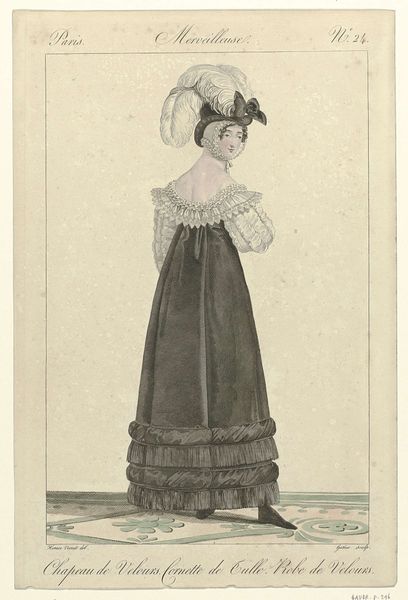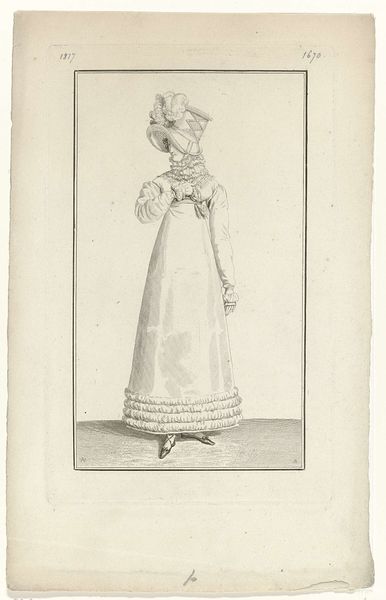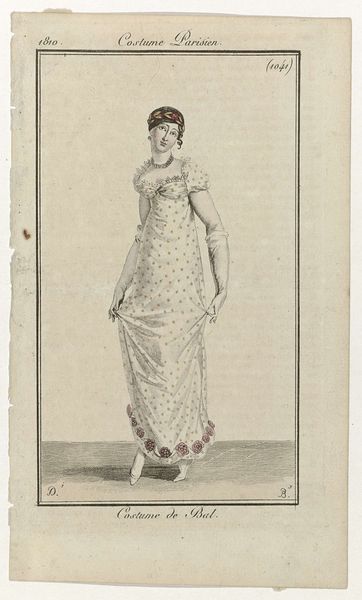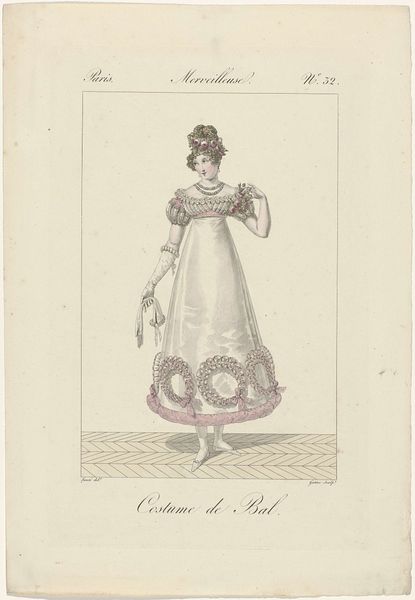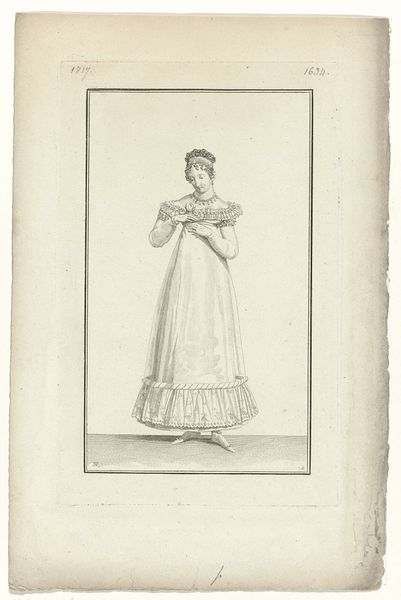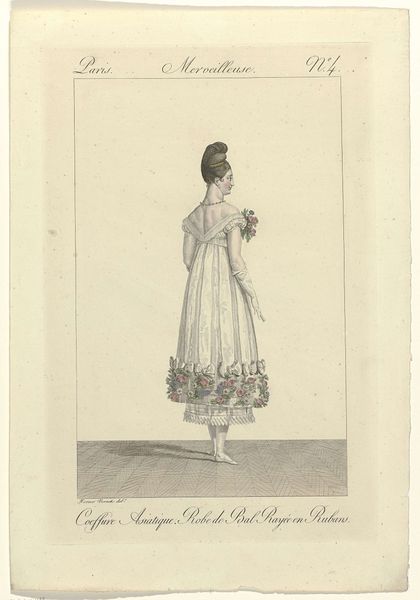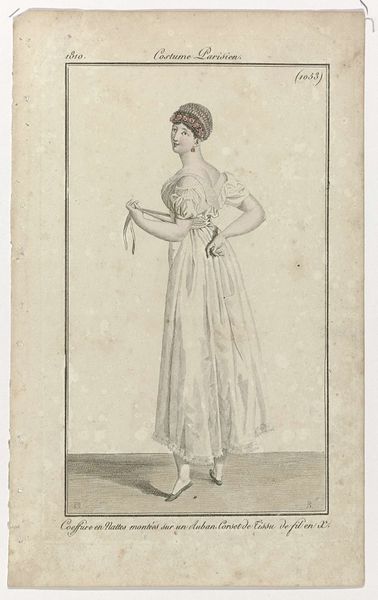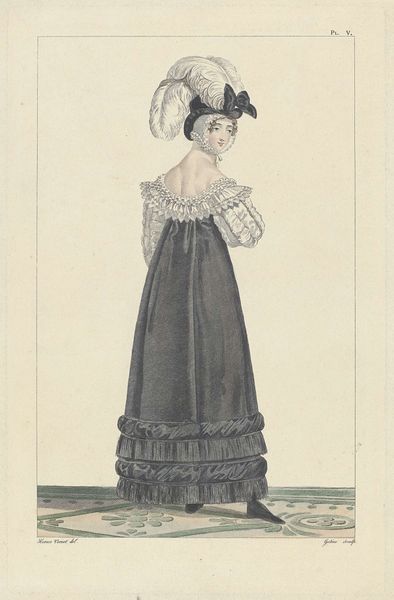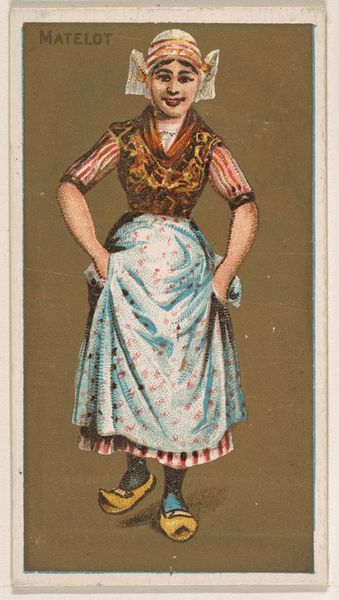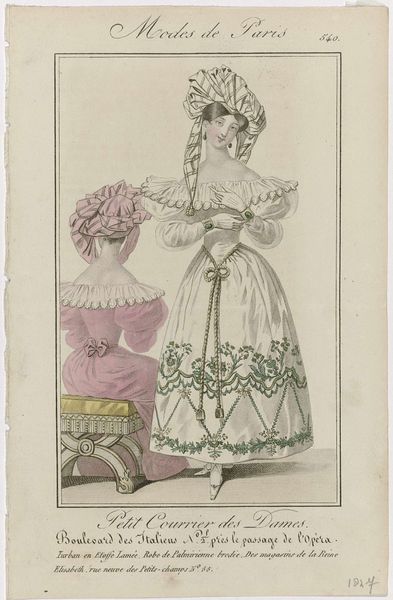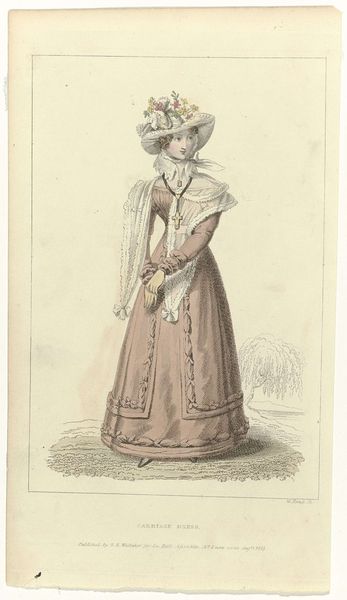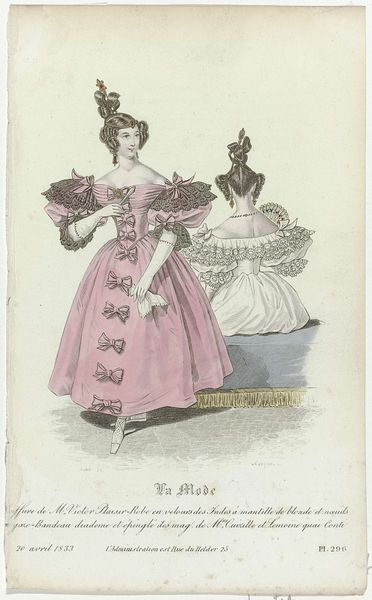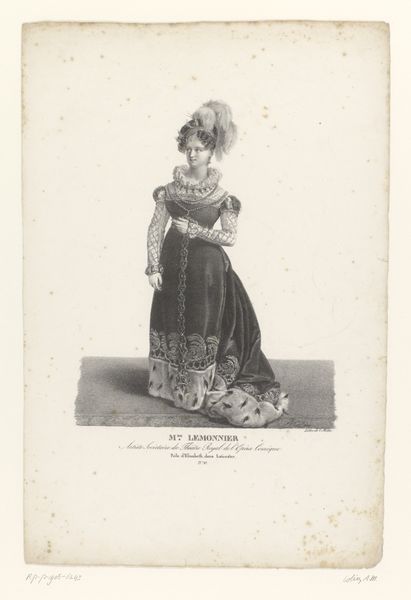
Journal des Dames et des Modes, Costume Parisien, 20 février 1816, (1544): Costume de Bal. 1816
0:00
0:00
#
imaginative character sketch
#
light pencil work
#
quirky sketch
#
flower
#
personal sketchbook
#
idea generation sketch
#
ink drawing experimentation
#
sketchbook drawing
#
watercolour illustration
#
storyboard and sketchbook work
#
sketchbook art
#
dress
Dimensions: height 177 mm, width 110 mm
Copyright: Rijks Museum: Open Domain
Pierre Charles Baquoy made this print, Costume de Bal, in 1816, using engraving and stipple techniques on paper. Look closely, and you’ll see the meticulous labour involved in the fine lines that define the figure and costume. The print would have been made using a painstaking process. First, the image was incised into a metal plate. Then, ink was applied and the excess carefully wiped away, leaving ink only in the engraved lines. Finally, the plate was pressed onto paper, transferring the image. Stipple engraving, used for the skin tones, involves creating tiny dots to produce tonal effects. These processes weren't just about reproduction, they were about creating an ideal image of elegance. Consider the social context: fashion prints like this played a crucial role in disseminating style. They fueled desires and shaped consumer culture. The detailed rendering of fabrics and embellishments highlights the value placed on luxury goods, and by extension, the labor required to produce them. The very materiality of this print reminds us that fashion, then as now, is deeply intertwined with production, labor, and aspiration.
Comments
No comments
Be the first to comment and join the conversation on the ultimate creative platform.
